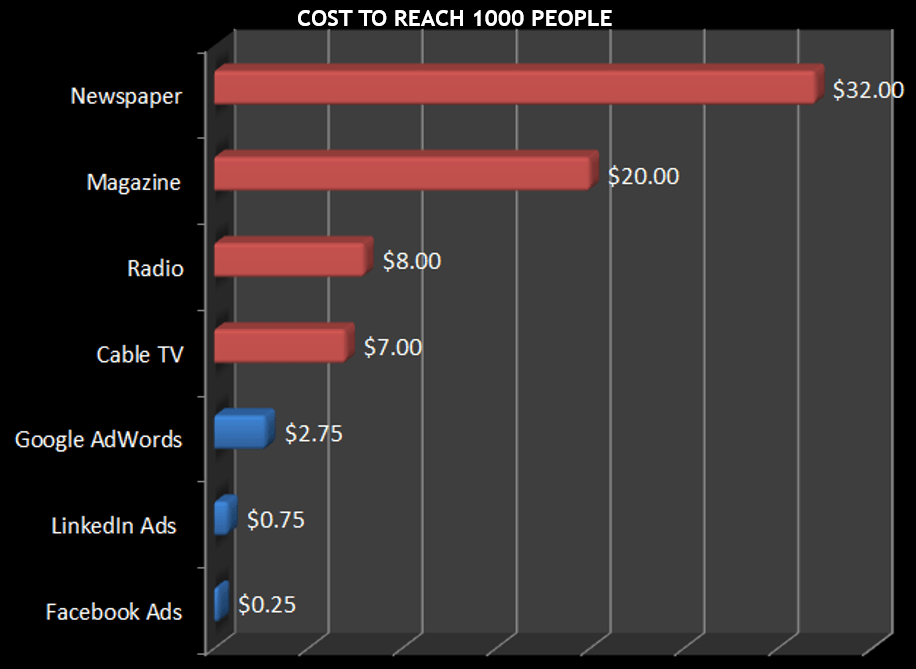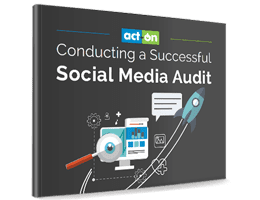 Budget running low? Never even had a budget? Don’t let it get you down. On social media, you can get further than you’d think on low-to-no budget. You just have to focus on the right things.
Budget running low? Never even had a budget? Don’t let it get you down. On social media, you can get further than you’d think on low-to-no budget. You just have to focus on the right things.
That’s what Karrie Sundbom, Act-On’s content marketing manager, proved when she ran social media at the non-profit Molly’s Fund Fighting Lupus from June 2012 through April 2015. She was faced with no budget … but she did have the ability to focus on Molly’s Fund social media full time, Karrie came to see that “if I really understood the pain points of the populations that we served, and understood what they wanted – which was to share information about their disease so that other people could understand them – then I would be successful.”
By following that simple mission statement, she was able to grow Molly’s Fund Facebook fans from just under 5,000 to 35,000 with zero marketing dollars.
Her focus on creating the kind of content her audience really wanted also translated into more website traffic. A LOT more website traffic. Like from 6-7,000 people per month in 2012, to about 182,000 visitors per month in 2015. That’s a 2,862% increase.
So don’t get glum if your budget is small. As Karrie says, “When you have very little budget, you are required to be much more creative and much better at creating the right kind of content… With very little budget, if you really understand who you’re speaking to and what they want to hear and what they want to share, your chances of success will increase.” Note that this principle isn’t just for those of us without resources; it’s really your key for success at any budget.
This is one of the core principles of why content marketing works: It’s about your audience. If you can understand your audience, and you really know how to talk to them and engage them, how big or small a budget you have becomes less of an issue. And honestly, if you don’t understand your audience correctly, a big budget may only amplify that misunderstanding.
Even if you’re in the zero budget club, there are enough free tools to get every basic marketing task done. But if you do have just a little bit to spend, we’ve got some suggestions on what to spend it on.
What $1,000 in Social Media Budget Will Buy You
Short answer? Not much – but enough to get the job done. $1,000 over the course of a year is just $83.33 per month. Basically, that buys you a couple of tools and a very modest promotion budget. But you can get surprisingly far with that.
- $30 a month (or less, or more) on Facebook advertising. ($53.33 of budget left.)
Does that seem like a ridiculously small amount of ad spend? Well, Brian Carter says $1 a day can get your content in front of 4,000 people per month.

Karrie also says Facebook advertising would have been worth the investment for her back when she was at Molly’s Fund. Why? Because that’s where her audience was. “I think for anybody with a very limited budget, if you really understand where your consumer or your target prospect/target market lives, spend money advertising on that platform.”
Karrie says she wouldn’t have done as well advertising on Twitter, for example, because her audience didn’t really hang out there.
- Buffer $10. ($43.33 of budget left.)
While there is a free plan for Buffer, if you’re doing anything serious on social media, it’s worth the $10 to have their business version. This will let you schedule posts months in advance. It works with Facebook, Twitter, LinkedIn, Google+, and Pinterest. You’ll get analytics reports and even suggested content for shares. Even better, Buffer works with a number of other social media tools.
- JustReTweet no minimum, $24 suggested. ($20 budget left.)
This is a paid social media sharing service. It sounds a whiff skeezy on the surface, but there are several layers of spam controls that keep it above board. Blogging powerhouses like Kristi Hines and Ana Hoffman use it frequently.
So why use it? Because it lets you get shares for your content in an affordable way. You can get 30 shares on Twitter, Facebook or Google+ for about $3 per piece of content. Real people will be sharing your content. They will usually even be in your industry, especially if you’re in marketing. If you promoted two pieces of content a week through JustReTweet it would run you only about $24 a month.
Now, don’t go abusing this. Use this to give your content a lift, not a moonshot. But if your marketing platform is new and you don’t have a lot of traffic, subscribers or followers, getting a bit of a lift from a service like this could be a huge help. And – even with your micro budget – you can afford it.
- Some graphic design help $20. (No budget left.)
Images are so important on social media that we have to recommend investing some money to them. Creating “interesting, catchy visuals” is also something Karrie says she would have spent a little money on – if she wasn’t blessed with some design skills of her own.  But she was, and it worked. “That was probably the most attention-catching thing I did.”
But she was, and it worked. “That was probably the most attention-catching thing I did.”
The good news is you don’t need an expensive designer. There are a bunch of highly rated gigs on Fiverr where designers will make a nice blog header image (or any other social media graphic) for $5 each. And if you do have design skills – great. Roll that $20 into your content promotion fund.
If you want more help than just a $20 Fiverr gig, consider “unlimited design services” from Undullify. They’re $69 a month, which fits within this budget. DesignPickle is another popular unlimited design service, but it starts at $370 per month.
What $5,000 in Social Media Budget Will Buy You
Now you’re looking at $416.67 per month. Let’s add everything listed above, which came to $83.33 a month. You’ve got $333.34 left.
- A stock photo subscription. $79 per month. ($254.34 of budget left.)
Yes, there are dozens of free photo sites that you could use instead. But how long does it take you to find a photo on those sites? Having a subscription at a decent stock photo site can save a lot of time.
Big Stock Photo is one choice. It’s my favorite because the images are good and there’s millions of them. And you can download the photos any time, even after your subscription has expired. Cost is $79 a month for 5 images a day or $79 a month for any 50 images, downloaded at any time over the course of the month.
- Advertising $200 per month. ($54.34 of budget left.)
Like Karrie suggests, go where your people are. Advertise on the platform where your audience – and your social media presence – is the strongest.
While content promotion is important, and often a major goal of social media advertising, think longer-term: Build your email list.
One of the ways Karrie was able to create so much content that her audience loved was because she surveyed them several times. At first, those surveys were via Facebook, but then it was via emails, often using SurveyMonkey’s free version. Those surveys mostly backed up what she already suspected about her audience, but they gave her quantitative proof she was right.
She needed the email list to make those surveys work, and to hit other marketing goals. After all, social media is great, but the smartest content marketers use it to build relationships with their audience. Getting people on your email list is an ideal way to do that.
- A social media management platform. $55 or so per month. (No budget left.)
 Oktopost’s basic plan has a lot of fans. So does SproutSocial. And, of course, there’s HootSuite. While these are admittedly a big investment for small budgets, they may help you coordinate and semi-automate some of your social media work. That might mean you’ll be able to write another blog post, answer more comments, or do a small social media audit every month. You can use Act-On’s eBook, Conducting a Social Media Audit to learn how to implement best practices for effectively generating leads that drive revenue through social media.
Oktopost’s basic plan has a lot of fans. So does SproutSocial. And, of course, there’s HootSuite. While these are admittedly a big investment for small budgets, they may help you coordinate and semi-automate some of your social media work. That might mean you’ll be able to write another blog post, answer more comments, or do a small social media audit every month. You can use Act-On’s eBook, Conducting a Social Media Audit to learn how to implement best practices for effectively generating leads that drive revenue through social media.
What $10,000 in Social Media Budget Will Buy You
Getting closer to the big leagues now. If we include the $416.67 from the $5,000 plan, you’ve got… the same amount left at the $10,000 level.
With over $400 to spend each month, you start to have some options. Namely, you can hire people. Some outsourced jobs might include:
- Hire a designer to redo some of your social media cover photos.
- Hire a designer to make a few of your best-performing blog posts into SlideShares.
- Hire a photographer for a day to give you a nice selection of real company photos to use on social media (and elsewhere).
- Hire a video editor to get a few videos spiffed up. Or hire a video editor to take some raw footage and turn it into a presentation video.
- Hire a writer to create 1-2 blog posts every month.
These are all good investments. You could also hire someone part time. Karrie found that to be particularly helpful when she was at Molly’s Fund. One of her helpers managed Facebook chats and other donor-facing work. It was only eight hours a week, but the expertise this person brought, plus her ability to talk authentically to the Molly’s Fund audience, made her a valuable addition.
Karrie added a second helper, too. This hire was an ex-Molly’s Fund employee. She worked remotely, posting all the social media updates and interacting with people on Facebook to keep engagement levels high.
Both these hires were good examples of not necessarily spending more money, but really just adding more time to the social team’s resources. Each of them also brought their own expertise. That’s another excellent reason to invest in some outside help.
Conclusion
Having a budget really just means you get to pick which parts of your work to outsource. Maybe you want to have someone else do some graphic design. Or have another person work the front lines on Facebook.
Whichever task you pick, there are plenty of options. If social media marketers are spoiled about anything, it’s how many tools we have at our disposal. And if you need a little human help, there are plenty of resources for where and how to find those people.
What about you?
If you had a bit more budget, what would you spend it on? And what’s your absolute must-have in your existing budget? Tell us about it in the comments.
